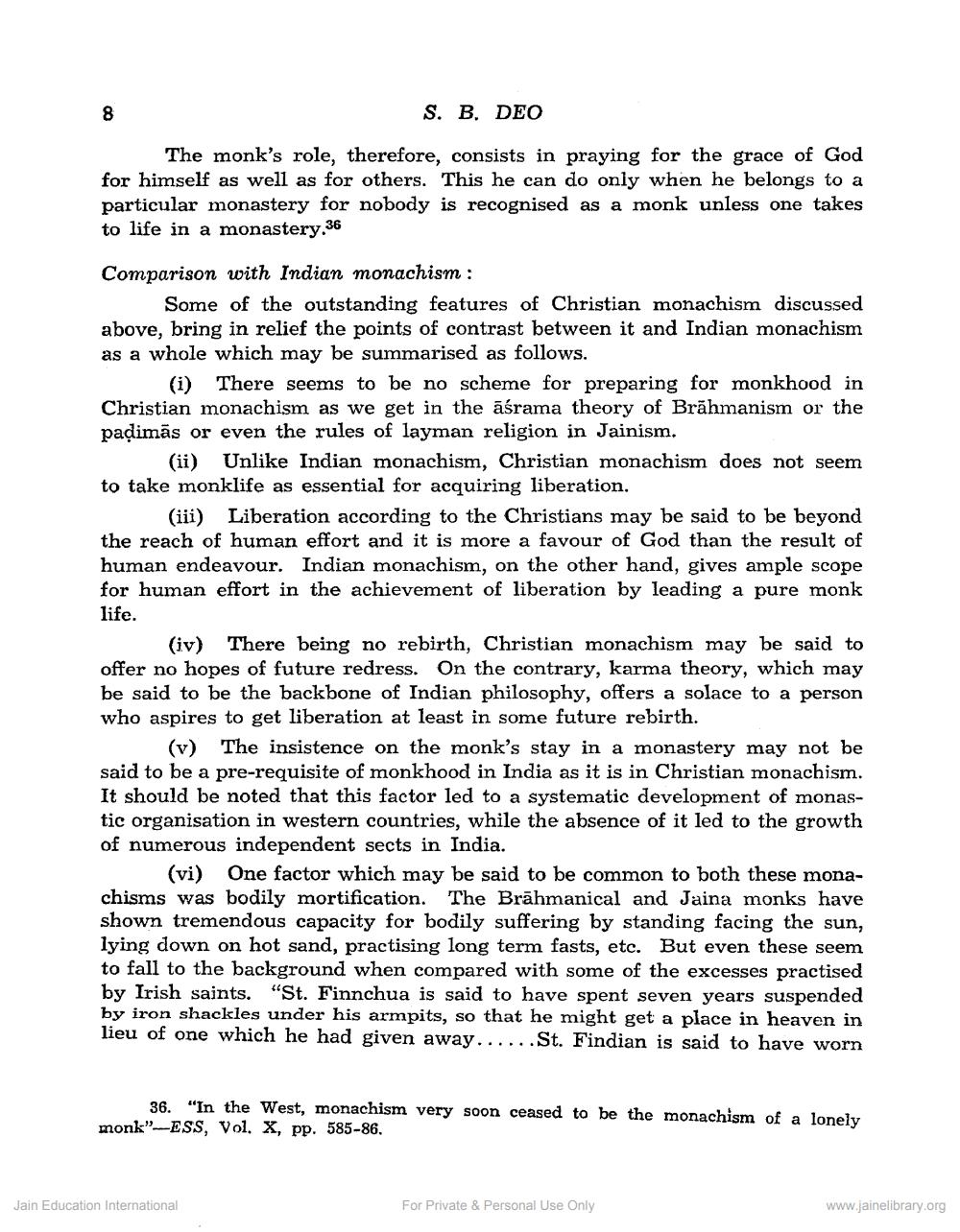________________
S. B. DEO
The monk's role, therefore, consists in praying for the grace of God for himself as well as for others. This he can do only when he belongs to a particular monastery for nobody is recognised as a monk unless one takes to life in a monastery.36
Comparison with Indian monachism:
Some of the outstanding features of Christian monachism discussed above, bring in relief the points of contrast between it and Indian monachism as a whole which may be summarised as follows.
(i) There seems to be no scheme for preparing for monkhood in Christian monachism as we get in the aśrama theory of Brāhmanism or the paạimās or even the rules of layman religion in Jainism.
(ii) Unlike Indian monachism, Christian monachism does not seem to take monklife as essential for acquiring liberation.
(iii) Liberation according to the Christians may be said to be beyond the reach of human effort and it is more a favour of God than the result of human endeavour. Indian monachism, on the other hand, gives ample scope for human effort in the achievement of liberation by leading a pure monk life.
(iv) There being no rebirth, Christian monachism may be said to offer no hopes of future redress. On the contrary, karma theory, which may be said to be the backbone of Indian philosophy, offers a solace to a person who aspires to get liberation at least in some future rebirth.
(v) The insistence on the monk's stay in a monastery may not be said to be a pre-requisite of monkhood in India as it is in Christian monachism. It should be noted that this factor led to a systematic development of monastic organisation in western countries, while the absence of it led to the growth of numerous independent sects in India.
(vi) One factor which may be said to be common to both these monachisms was bodily mortification. The Brāhmanical and Jaina monks have shown tremendous capacity for bodily suffering by standing facing the sun, lying down on hot sand, practising long term fasts, etc. But even these seem to fall to the background when compared with some of the excesses practised by Irish saints. "St. Finnchua is said to have spent seven years suspended by iron shackles under his armpits, so that he might get a place in heaven in lieu of one which he had given away...... St. Findian is said to have worn
36. "In the West, monachism very soon ceased to be the monachism of a lonely monk"--ESS, Vol. X, pp. 585-86.
Jain Education International
For Private & Personal Use Only
www.jainelibrary.org




